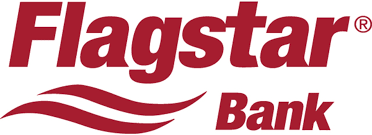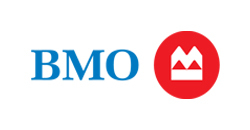2025 FHA Loan Limits in Idaho
Loans backed by the Federal Housing Administration (FHA) make homeownership in Idaho more affordable for some buyers, thanks to low minimum down payments and flexible credit requirements. However, FHA mortgages are subject to maximum loan amounts. The 2025 FHA loan limits for a single-family home in Idaho range from $524,225 to $1,209,750, depending on the county.
Here’s what to know about qualifying for an FHA loan in Idaho, including your county’s borrowing limits.
Idaho FHA loan limits by county
| County name | One unit | Two units | Three units | Four units | Median sales price |
|---|---|---|---|---|---|
| ADA | $586,500 | $750,800 | $907,550 | $1,127,900 | $488,000 |
| ADAMS | $524,225 | $671,200 | $811,275 | $1,008,300 | $299,000 |
| BANNOCK | $524,225 | $671,200 | $811,275 | $1,008,300 | $320,000 |
| BEAR LAKE | $524,225 | $671,200 | $811,275 | $1,008,300 | $270,000 |
| BENEWAH | $524,225 | $671,200 | $811,275 | $1,008,300 | $238,000 |
| BINGHAM | $524,225 | $671,200 | $811,275 | $1,008,300 | $324,000 |
| BLAINE | $759,000 | $971,650 | $1,174,500 | $1,459,650 | $627,000 |
| BOISE | $586,500 | $750,800 | $907,550 | $1,127,900 | $488,000 |
| BONNER | $524,225 | $671,200 | $811,275 | $1,008,300 | $431,000 |
| BONNEVILLE | $524,225 | $671,200 | $811,275 | $1,008,300 | $415,000 |
| BOUNDARY | $524,225 | $671,200 | $811,275 | $1,008,300 | $351,000 |
| BUTTE | $524,225 | $671,200 | $811,275 | $1,008,300 | $415,000 |
| CAMAS | $759,000 | $971,650 | $1,174,500 | $1,459,650 | $627,000 |
| CANYON | $586,500 | $750,800 | $907,550 | $1,127,900 | $488,000 |
| CARIBOU | $524,225 | $671,200 | $811,275 | $1,008,300 | $278,000 |
| CASSIA | $524,225 | $671,200 | $811,275 | $1,008,300 | $310,000 |
| CLARK | $524,225 | $671,200 | $811,275 | $1,008,300 | $213,000 |
| CLEARWATER | $524,225 | $671,200 | $811,275 | $1,008,300 | $241,000 |
| CUSTER | $524,225 | $671,200 | $811,275 | $1,008,300 | $290,000 |
| ELMORE | $524,225 | $671,200 | $811,275 | $1,008,300 | $332,000 |
| FRANKLIN | $524,225 | $671,200 | $811,275 | $1,008,300 | $422,000 |
| FREMONT | $524,225 | $671,200 | $811,275 | $1,008,300 | $386,000 |
| GEM | $586,500 | $750,800 | $907,550 | $1,127,900 | $488,000 |
| GOODING | $524,225 | $671,200 | $811,275 | $1,008,300 | $281,000 |
| IDAHO | $524,225 | $671,200 | $811,275 | $1,008,300 | $259,000 |
| JEFFERSON | $524,225 | $671,200 | $811,275 | $1,008,300 | $415,000 |
| JEROME | $524,225 | $671,200 | $811,275 | $1,008,300 | $332,000 |
| KOOTENAI | $572,700 | $733,150 | $886,200 | $1,101,350 | $480,000 |
| LATAH | $524,225 | $671,200 | $811,275 | $1,008,300 | $412,000 |
| LEMHI | $524,225 | $671,200 | $811,275 | $1,008,300 | $275,000 |
| LEWIS | $524,225 | $671,200 | $811,275 | $1,008,300 | $216,000 |
| LINCOLN | $524,225 | $671,200 | $811,275 | $1,008,300 | $236,000 |
| MADISON | $524,225 | $671,200 | $811,275 | $1,008,300 | $386,000 |
| MINIDOKA | $524,225 | $671,200 | $811,275 | $1,008,300 | $310,000 |
| NEZ PERCE | $524,225 | $671,200 | $811,275 | $1,008,300 | $337,000 |
| ONEIDA | $524,225 | $671,200 | $811,275 | $1,008,300 | $257,000 |
| OWYHEE | $586,500 | $750,800 | $907,550 | $1,127,900 | $488,000 |
| PAYETTE | $524,225 | $671,200 | $811,275 | $1,008,300 | $333,000 |
| POWER | $524,225 | $671,200 | $811,275 | $1,008,300 | $320,000 |
| SHOSHONE | $524,225 | $671,200 | $811,275 | $1,008,300 | $279,000 |
| TETON | $1,209,750 | $1,548,975 | $1,872,225 | $2,326,875 | $1,800,000 |
| TWIN FALLS | $524,225 | $671,200 | $811,275 | $1,008,300 | $332,000 |
| VALLEY | $573,850 | $734,650 | $888,000 | $1,103,550 | $448,000 |
| WASHINGTON | $524,225 | $671,200 | $811,275 | $1,008,300 | $283,000 |

How are FHA loan limits determined?
FHA loan limits are determined annually based on a formula outlined in the National Housing Act. Using median home sale data and location information, the formula lays out loan limits in three cost categories: a low-cost area “floor,” a high-cost area “ceiling” and a special exception area “ceiling.” Limits vary by property size, from one- to four-unit properties.
Floor and ceiling loan limits are determined using the conforming loan limit set by the Federal Housing Finance Agency (FHFA) for loans guaranteed by Fannie Mae or Freddie Mac. The floor is 65% of the conforming loan limit, and the ceiling is 150% of the conforming loan limit.
In Idaho, the floor limit of $524,255 applies in most counties. More expensive areas have FHA loan limits that fall between the floor and ceiling, while one county, Teton, has a loan limit at the FHA’s ceiling of $1,209,750.
How to qualify for an FHA loan in Idaho
Borrowers must meet specific eligibility requirements to qualify for an FHA loan in Idaho:
- Minimum 500 to 580 credit score of 500 or 580: FHA lenders will accept a minimum 500 credit score, but you’ll need a score of 580 or higher if you plan to make the minimum 3.5% down payment. Borrowers with credit scores between 500 and 579 will need to make a down payment of at least 10%.
- Minimum 3.5% down payment: You can qualify with a down payment as low as 3.5% if your credit score is 580 or higher. If your score falls between 500 and 579, you must make a 10% minimum down payment.
- Maximum 43% debt-to-income ratio: Your debt-to-income (DTI) ratio represents the percentage of your gross income that can go toward your monthly debt payments, including your mortgage. Generally, FHA lenders prefer DTI ratios below 43%; however, lenders may make exceptions if you have good credit or substantial cash reserves.
- Employment history: FHA loans do not have income restrictions, but lenders will generally request documentation, such as paystubs and W-2s, from jobs you’ve held over the past two years.
- Home appraisal: Every property secured by an FHA loan must undergo an FHA appraisal, which assesses the home’s market value and confirms that it meets FHA standards.
- Mortgage insurance: You’ll pay two types of FHA mortgage insurance: an upfront premium of 1.75% of the loan amount (typically financed into your loan) and an annual mortgage insurance premium of 0.15% to 0.75% (calculated with your monthly mortgage payments).
- Primary residence: The mortgage must be for a primary residence. FHA loans cannot be used for second homes or vacation properties.

Buying a multifamily property with an FHA loan
The FHA loan program allows borrowers to purchase a multifamily home of two to four units with just 3.5% down. Designed for homeowners who plan to occupy at least one of the units themselves, FHA multifamily loan eligibility requirements include:
- Proof of income: You’ll need to provide evidence of adequate income to cover the mortgage. If you plan to rent out the other units, you can use a portion of the expected rental revenue as income.
- Credit score and down payment: You’ll need a credit score of 580 or higher with a 3.5% down payment. If your credit score is between 500 and 579, you must make a minimum 10% down payment.
- Adequate DTI ratio: Most lenders prefer DTI ratios of 43% or less, but qualifications can vary depending on your credit score and other factors.
- Owner occupancy: You must plan to live in one of the units as your primary residence for at least one year.
- Cash reserves: You’ll need to prove you have a certain amount of cash reserves.
The 2025 FHA loan limits for multifamily properties are higher than those for single-family homes.
| Number of units | Low-cost FHA loan limit |
|---|---|
| Two | $671,200 |
| Three | $811,275 |
| Four | $1,008,300 |
FHA lenders in Idaho
Lender | LendingTree rating | Minimum FHA credit score | |
|---|---|---|---|
 | 580 | Get offers | |
 | 580 | Get offers | |
 | 580 | Get offers | |
 | 620 | Get offers | |
 | 580 | Get offers |



